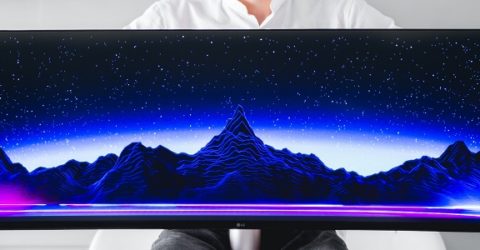How to use dual screen displays on Windows devices
Dual screen displays are invaluable for some jobs, and highly beneficial for people who regularly juggle multiple tasks on a computer

Dual screen displays represent something of a hidden weapon for many computers, yet consumers are often oblivious to either their presence or their potential.
We often see two monitors displaying different content in movies, footage of software development firms, and documentaries about specialist careers like music production.
Yet every modern PC has graphical capacity to support dual screen displays – and many people would benefit by having twice as much information displaying at any given moment.
Here’s what you need to know.
Screen test
Modern monitors tend to have a variety of connection inputs, which is handy if your tower or laptop only has one VGA or HDMI port.
You will need a PC with a graphics card capable of supporting two monitors, though it’s rare to find a modern graphics card which isn’t.
Connect both screens to your computer and power them up, ensuring that they’re both switched on.
MoreWhat size computer screen do I need?
On Windows 7 and 8, right-click the desktop and choose Screen Resolution. On Windows 10, the same process reveals an option called Display Settings.
An alternative route is to go to Start > Settings > System > Display.
The menu that appears includes a sub-heading entitled Multiple Displays.
If more than one monitor is connected, you’ll be able to view their respective information including resolutions, refresh rates and other key properties.
Select which monitor stands on the left – this is important, because otherwise moving the cursor between screens will be deeply confusing.
Next, choose a primary display. Selecting “Make this my main display” instructs that screen to display the Windows taskbar and Start button.
Once you’ve organised dual screen displays, click Keep Changes and exit the menu.
You can modify these settings at any time in Windows 10 by pressing the Windows button and P simultaneously, to bring up a display management menu.
This allows you to duplicate the primary screen’s contents on its sibling, stretch the desktop across both screens, or focus exclusively on the second screen.
Dual purpose
Once dual monitors are activated, you have twice as much on-screen real estate to play with (assuming both screens are running at the industry standard 1920×1080 ratio).
This is ideal for people who require copious amounts of data on-screen at once, such as tax professionals and software programmers.
Anyone who routinely has multiple programs or tabs open at once is likely to reap rich rewards from setting up a second monitor.
You’ll have to use the mouse to identify which screen is active, just as you would when using a single screen with two utilities in Split Screen mode (side-by-side windows).
Research has shown productivity increases with a second screen, while the time taken to complete a task decreases.
This is partly because swapping between open utilities is a distraction, whereas glancing at your email inbox to see what’s just arrived is less likely to derail current activity.
Twin displays are ideal in the video conferencing age, allowing you to have other attendees full-screen on one monitor while you view documents or notes on the other.
They’re also helpful when making side-by-side comparisons, giving you a full web browser for each rather than the mobile-optimised cut-down versions you get in half-screen guise.
Gamers are generally already sold on the concept of dual screens, since they’re invaluable for immersive titles like MMORPGs.






